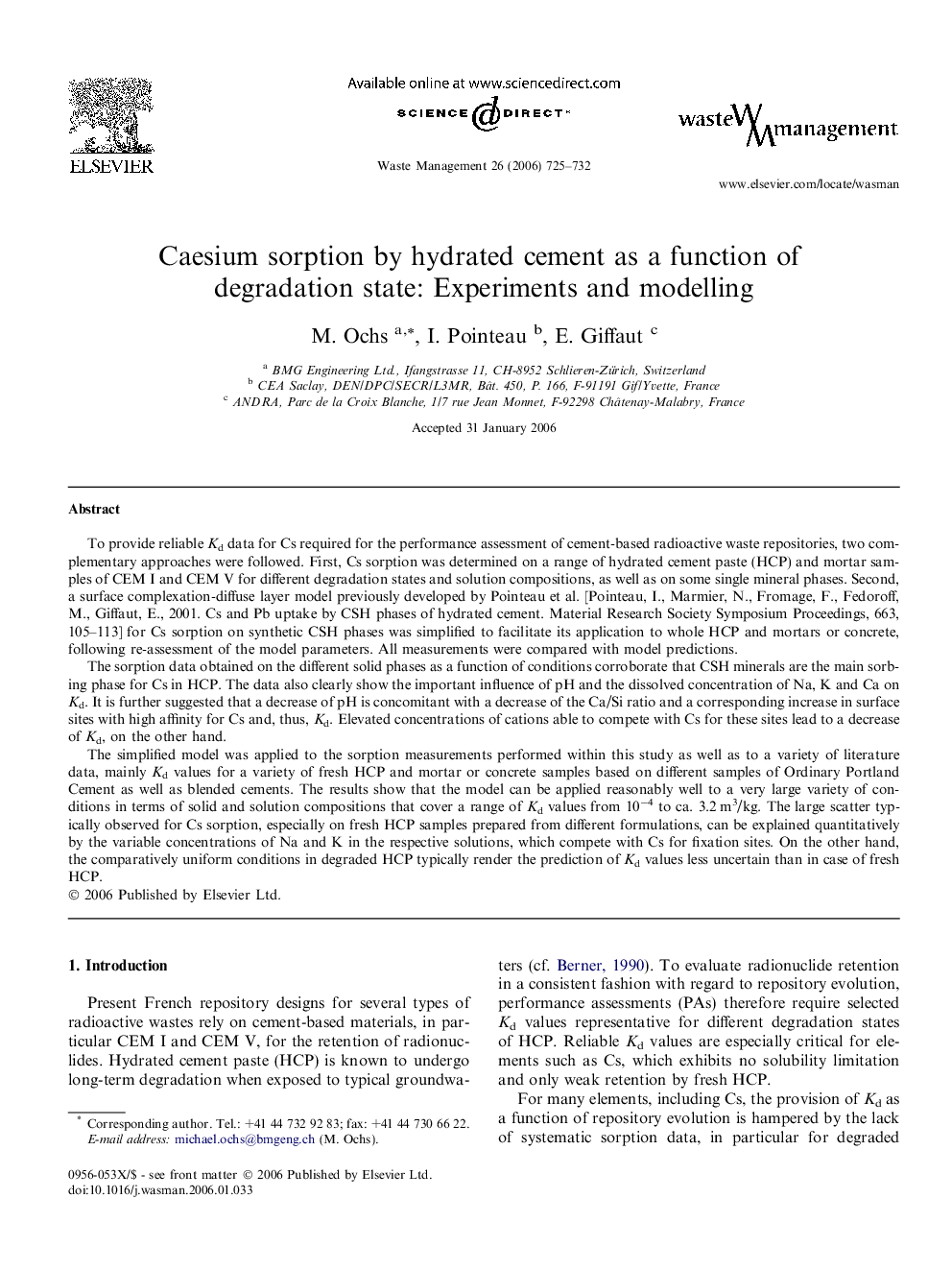| Article ID | Journal | Published Year | Pages | File Type |
|---|---|---|---|---|
| 4473958 | Waste Management | 2006 | 8 Pages |
To provide reliable Kd data for Cs required for the performance assessment of cement-based radioactive waste repositories, two complementary approaches were followed. First, Cs sorption was determined on a range of hydrated cement paste (HCP) and mortar samples of CEM I and CEM V for different degradation states and solution compositions, as well as on some single mineral phases. Second, a surface complexation-diffuse layer model previously developed by Pointeau et al. [Pointeau, I., Marmier, N., Fromage, F., Fedoroff, M., Giffaut, E., 2001. Cs and Pb uptake by CSH phases of hydrated cement. Material Research Society Symposium Proceedings, 663, 105–113] for Cs sorption on synthetic CSH phases was simplified to facilitate its application to whole HCP and mortars or concrete, following re-assessment of the model parameters. All measurements were compared with model predictions.The sorption data obtained on the different solid phases as a function of conditions corroborate that CSH minerals are the main sorbing phase for Cs in HCP. The data also clearly show the important influence of pH and the dissolved concentration of Na, K and Ca on Kd. It is further suggested that a decrease of pH is concomitant with a decrease of the Ca/Si ratio and a corresponding increase in surface sites with high affinity for Cs and, thus, Kd. Elevated concentrations of cations able to compete with Cs for these sites lead to a decrease of Kd, on the other hand.The simplified model was applied to the sorption measurements performed within this study as well as to a variety of literature data, mainly Kd values for a variety of fresh HCP and mortar or concrete samples based on different samples of Ordinary Portland Cement as well as blended cements. The results show that the model can be applied reasonably well to a very large variety of conditions in terms of solid and solution compositions that cover a range of Kd values from 10−4 to ca. 3.2 m3/kg. The large scatter typically observed for Cs sorption, especially on fresh HCP samples prepared from different formulations, can be explained quantitatively by the variable concentrations of Na and K in the respective solutions, which compete with Cs for fixation sites. On the other hand, the comparatively uniform conditions in degraded HCP typically render the prediction of Kd values less uncertain than in case of fresh HCP.
